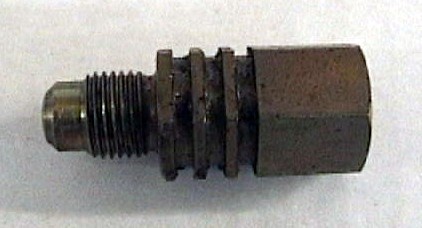HOW TO REMOVE THE CLUTCH DELAY VALVE
| Make: |
BMW |
| Models: |
E36 M3 3.2 ('96-'99 only),
E46 323, 328, E39 5 series with manual transmission (except M5), and Z8
|
Slow clutch engagement on E46, E39, and E53

Many owners of the E46 3-series, E39 5-series, and Z8 cars have noticed that they will get an
excessive amount of clutch slippage and poor clutch engagement feel. This
problem is most noticeable in situations calling for hard acceleration or
quick shifting.
The cause is an added
check valve (BMW calls it a "lock valve") in the clutch hydraulic circuit that is intended to slow the
engagement of the clutch as you release the pedal. This constant engagement
device is intended to smooth out the feel of shifts and potentially reduce
the shock load on the drivetrain. The reality is it causes a high rate of
wear on the clutch and excessive heat buildup in the flywheel leading to
early failure.
...and also on E36 M3/MZ3 3.2l with aftermarket lightweight flywheels!
The two possible
locations:
(click for a larger view) |
 |

|
A little-known detail about the 1996-1999 M3/MZ3 3.2l (including Euro cars)
is that they too have this part. Similar to the affliction of the E46 and
E39, except this valve only seems to affect cars with aftermarket lightweight
flywheels. Due to the quick-revving nature of these setups, the
slow-down of the check valve causes momentary excessive clutch slippage. A
particular example is a "power shift" where the revs hang for a moment
before fully engaging. M3s with the 3.0l engine do not have this part, nor
do any other E36.
Removal of the valve in these cars results in very crisp and firm shifts.
With the lightweight flywheel, the engagement is so positive and quick that
passengers are pushed into the seat with greater force than ever before.
The good news is this valve can be removed from the system with no
additional parts required. The check valve is threaded into the clutch slave
cylinder with an end that matches the end on the metal hydraulic line so all
that needs to be done is remove the valve assembly and reinstall the line to the slave cylinder. Bleed
any air out of the hydraulics and you are done.
Compiled with information contributed by Paul Dzimian and Rob Levinson
|
|
Copyright © 2000-2009 Chiba Technologies, Inc.
All rights reserved. 678-678-5360 Visit us on the web at
http://www.uucmotorwerks.com
|

